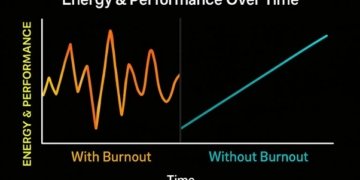The medical image exchange systems market has been gaining substantial traction, spurred by the growing need for healthcare providers to share medical images and other patient-related data seamlessly. This ability to exchange medical images across different healthcare institutions has revolutionized the way healthcare professionals access and evaluate patient data. The global market for these systems was valued at USD 3.75 billion in 2022, with projections suggesting a rise to USD 7.97 billion by 2032, expanding at a compound annual growth rate (CAGR) of 7.8%. The growth is largely driven by increasing demand for high-quality, secure, and reliable medical image exchange workflows, such as image exchange workflows, clinical workflows, and health information exchange (HIE) portals. This rise is indicative of how essential the seamless flow of medical data is to improving healthcare outcomes worldwide.
Get a Sample PDF Brochure of the Report (Use Corporate Email ID for a Quick Response): https://www.persistencemarketresearch.com/samples/11464
Key growth drivers include advancements in medical imaging technologies, the increasing adoption of cloud-based solutions, and the shift towards digital healthcare infrastructures. Leading the market are cloud-based medical image exchange systems, which allow for enhanced image sharing capabilities. Furthermore, the implementation of 5G technology is expected to boost market growth, enabling faster data transfer speeds and enhancing the efficiency of healthcare data sharing. The United States, with its robust healthcare infrastructure and rapid digital transformation, stands as the leading geographical region, contributing significantly to the growth of the global medical image exchange systems market.
Key Highlights from the Report:
• The global medical image exchange systems market is expected to reach USD 7.97 billion by 2032.
• The market is projected to grow at a CAGR of 7.8% from 2022 to 2032.
• The share of the top five market players stands at 40%.
• Medical image exchange systems accounted for approximately 15% of the global medical imaging market in 2021.
• Cloud-based solutions are the leading segment in the market, driven by the need for scalable and efficient image sharing systems.
• The implementation of 5G technology is expected to significantly boost the market by enhancing data transfer speeds and reducing latency.
Market Segmentation
By Product Type
The medical image exchange systems market is divided into different segments based on product types, including cloud-based systems, web-based systems, and on-premise systems. Among these, cloud-based medical image exchange solutions dominate the market, owing to their scalability, flexibility, and ability to reduce the cost of infrastructure. These systems allow healthcare providers to store and share large volumes of medical images in real time, regardless of geographic location. The advantages of cloud solutions have led to their increasing adoption by hospitals, clinics, and diagnostic centers. Furthermore, the integration of artificial intelligence (AI) and machine learning (ML) into cloud-based systems has further improved the speed and accuracy of data sharing and image processing.
By End-User
The market is also segmented by end-user, including healthcare providers, diagnostic centers, and research organizations. Healthcare providers hold the largest share, as the adoption of medical image exchange systems is critical to improving patient care and clinical workflows. The growing number of hospitals adopting integrated health information systems, along with government regulations that push for interoperability and data sharing, are key factors influencing the adoption among healthcare providers. Diagnostic centers and research organizations also contribute significantly to the market, leveraging these systems for advanced diagnostic imaging and medical research applications. As the demand for faster, more accurate diagnoses grows, the need for efficient medical image exchange systems will continue to rise.
Regional Insights
North America
North America, particularly the United States, has remained the leading region in the global medical image exchange systems market. The rapid adoption of digital healthcare technologies, including cloud solutions and PACS (Picture Archiving and Communication Systems), is driving market growth in this region. The U.S. healthcare system, with its well-established infrastructure and regulatory framework, supports the widespread use of medical image exchange systems. Additionally, the U.S. is seeing an increased push for data interoperability, which is further boosting demand for these systems. The region’s focus on improving patient care and enhancing healthcare delivery through technology is expected to continue fueling growth.
Europe and Asia-Pacific
Europe is another key region, benefiting from strong healthcare infrastructure and an increased focus on digital health solutions. European countries are prioritizing the implementation of cross-border health data exchange initiatives, which enhances the need for efficient medical image exchange systems. The Asia-Pacific region, on the other hand, is witnessing significant growth in countries like China and India, where the adoption of digital health technologies is accelerating. The expansion of healthcare services, along with increasing investments in the healthcare sector, is expected to drive the demand for medical image exchange systems in this region over the next decade.
Market Drivers
Several factors contribute to the growth of the medical image exchange systems market. One of the key drivers is the increasing adoption of cloud-based solutions by healthcare providers. Cloud technology offers greater flexibility, security, and cost-effectiveness compared to traditional on-premise systems, making it an attractive option for hospitals and clinics. Another major driver is the implementation of 5G technology in healthcare, which will significantly enhance the speed and reliability of medical image sharing. Additionally, the growing emphasis on data interoperability and patient-centered care is pushing healthcare systems to adopt integrated image exchange solutions to ensure better outcomes for patients and healthcare providers alike.
Market Restraints
Despite its strong growth prospects, the medical image exchange systems market faces certain challenges. One of the major restraints is the concern over data privacy and security. As more sensitive medical data is shared across networks, the risk of cyberattacks and data breaches increases, raising concerns among healthcare providers and patients alike. Another challenge is the high initial investment required for implementing medical image exchange systems, particularly for smaller healthcare facilities that may not have the necessary financial resources. The complexity of integrating these systems with existing IT infrastructures also poses a challenge, as it may require substantial time and effort to ensure seamless operation across different platforms.
Market Opportunities
The growing demand for telemedicine and remote patient monitoring presents a significant opportunity for the medical image exchange systems market. With the rise of virtual healthcare and telemedicine platforms, the need for efficient and reliable image exchange solutions is expected to increase, allowing healthcare providers to offer remote diagnostics and consultations. Additionally, the increasing focus on AI and machine learning in healthcare presents opportunities for the integration of advanced image processing technologies into medical image exchange systems, improving the accuracy and speed of image analysis. These developments are expected to open new avenues for market expansion in the coming years.
Reasons to Buy the Report
✔ Comprehensive Market Analysis: Gain in-depth insights into the current market trends and growth drivers in the medical image exchange systems market.
✔ Forecast Data for 2022-2032: Understand the projected market value and growth rate through to 2032 to make informed decisions.
✔ Strategic Insights for Key Players: Identify the leading market players and their strategies for success.
✔ Comprehensive Regional Breakdown: Understand the market dynamics in different geographical regions, helping businesses target the right markets.
✔ Detailed Competitive Landscape: Analyze the competitive landscape and learn about the key players’ strengths and weaknesses in the market.
Frequently Asked Questions (FAQs)
How Big is the Market for Medical Image Exchange Systems?
Who are the Key Players in the Global Medical Image Exchange Systems Market?
What is the Projected Growth Rate of the Market?
What is the Market Forecast for Medical Image Exchange Systems for 2032?
Which Region is Estimated to Dominate the Medical Image Exchange Systems Market through the Forecast Period?
Company Insights
Some of the key players operating in the medical image exchange systems market include:
• GE Healthcare
• Siemens Healthineers
• Philips Healthcare
• Cerner Corporation
• IBM Watson Health
• Merge Healthcare (an IBM company)
• Agfa Healthcare
Recent Developments:
• Increased Collaborations: GE Healthcare has formed new partnerships to expand its cloud-based image exchange systems, aiming to enhance interoperability between healthcare providers.
• Launch of AI-Enhanced Solutions: Siemens Healthineers has introduced AI-powered tools integrated into its medical image exchange systems, improving diagnostic accuracy and workflow efficiency.
Contact Us:
Persistence Market Research
G04 Golden Mile House, Clayponds Lane
Brentford, London, TW8 0GU UK
USA Phone: +1 646-878-6329
UK Phone: +44 203-837-5656
Email: sales@persistencemarketresearch.com
Web: https://www.persistencemarketresearch.com
About Persistence Market Research:
At Persistence Market Research, we specialize in creating research studies that serve as strategic tools for driving business growth. Established as a proprietary firm in 2012, we have evolved into a registered company in England and Wales in 2023 under the name Persistence Research & Consultancy Services Ltd. With a solid foundation, we have completed over 3600 custom and syndicate market research projects, and delivered more than 2700 projects for other leading market research companies’ clients.
Our approach combines traditional market research methods with modern tools to offer comprehensive research solutions. With a decade of experience, we pride ourselves on deriving actionable insights from data to help businesses stay ahead of the competition. Our client base spans multinational corporations, leading consulting firms, investment funds, and government departments. A significant portion of our sales comes from repeat clients, a testament to the value and trust we’ve built over the years.
This release was published on openPR.



















